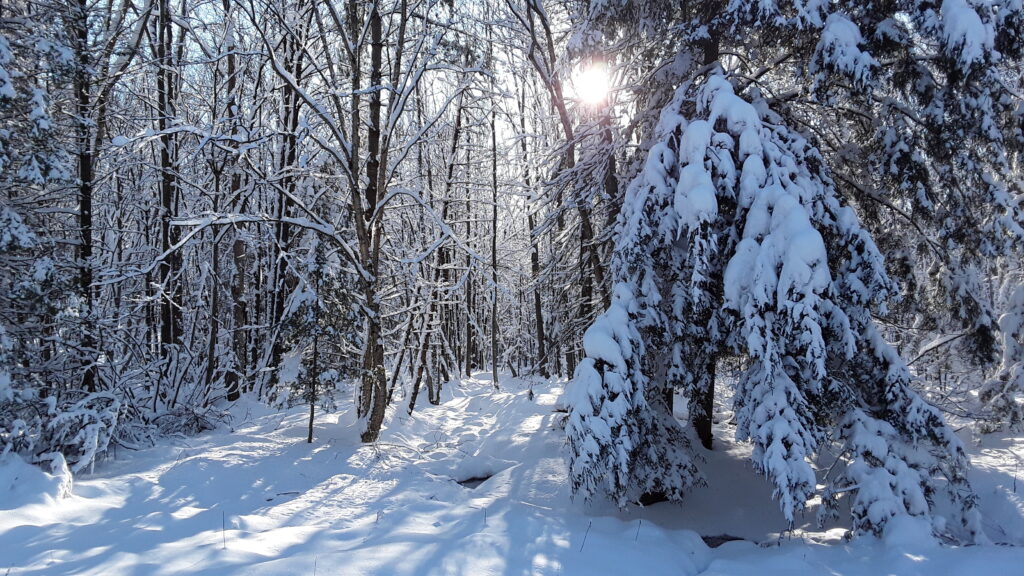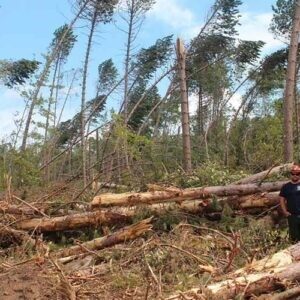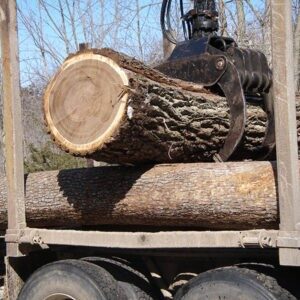
WICCI Report: Warmer Winters & Extreme Rain Are Stressing Wisconsin’s Forest Resources
By Dea Larsen Converse: WICCI Communications Director
A focus on climate impacts to Wisconsin’s forests in the most recent assessment from the Wisconsin Initiative on Climate Change Impacts (WICCI) shows that warming temperatures and changing precipitation patterns are impacting Wisconsin’s urban and rural forests. Wisconsin’s average daily temperature has become three degrees Fahrenheit warmer and precipitation has increased 17 percent, about five inches, since 1950. The last two decades have been the warmest on record and last decade was the wettest.
“Wisconsin forests cover nearly half of Wisconsin and provide a unique opportunity to address climate change by reducing concentrations of greenhouse gases while simultaneously providing essential social, environmental, and economic benefits.” – Stephen Handler, WICCI Forestry Working Group Chair
Climate Impacts to Forests
- Warmer winters. Winter has warmed about twice as fast as other seasons in Wisconsin over the past few decades. In Northern Wisconsin, where most of Wisconsin’s forests are located, warmer winters are reducing the snowpack that insulates trees and other organisms, impacting forest operations such as harvesting and transportation that rely on frozen ground, and creating less lethal conditions for pests and diseases.
- Deer herds. With less severe winters, especially in Northern Wisconsin, larger numbers of deer are surviving and having a big impact on forest regeneration as they browse on understory plants, including sensitive species.
- Extreme weather events. Extreme storms are happening more frequently and creating a great deal of damage in forests through flooding, erosion, and deposition of nutrients and invasive species seeds. These extreme storms also cause considerable damage to infrastructure on forest land.
- Summer droughts and longer growing seasons. Warmer temperatures, longer growing seasons, and decreasing summer precipitation in Northern Wisconsin, are increasing the risk for wildfires, pests, and disease. Reduced snowpack and earlier springs are also drying out vegetation at a faster rate in the spring and summer. While prescribed fires could help, it is becoming increasingly difficult to find a safe window to use them as the climate changes.
- Impacts on communities. While all communities in Wisconsin are at risk, historically disadvantaged communities bear a disproportionate burden and suffer the greatest harms. For example, large canopy trees can play a big role in helping urban areas become more resilient to climate change, yet studies are showing a disparity in the location of tree canopy in some cities. Also, Wisconsin tribes are working to help culturally significant species, like paper birch, adapt to changing conditions with resources like climate change vulnerability assessments.
On their webpage, the WICCI Forestry Working Group suggests solutions and offers tools to help landowners and forest managers address climate impacts.
WICCI is a nationally recognized collaboration of scientists and stakeholders working together to help foster solutions to climate change in Wisconsin.
Other Stories from WICCI
A perspective on urban forests and climate change

Effects of the 2019 derecho on the Chequamegon-Nicolet National Forest

The impacts of warmer winters and unpredictable conditions on a logging business

